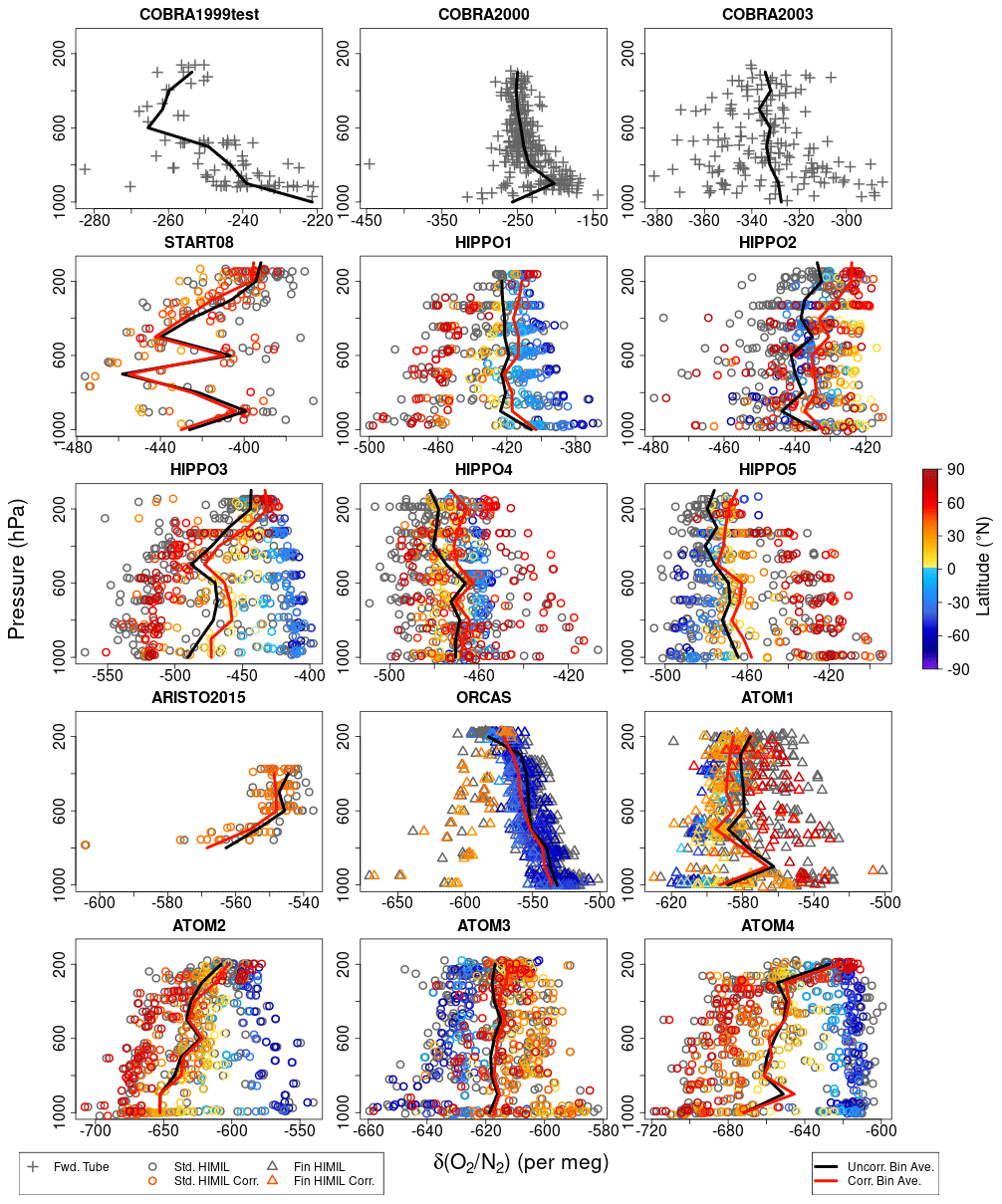NCAR / Scripps Airborne Flask Sampler
Medusa provides the capability for collecting samples of air integrated over 30-60 s (1 e-fold) sample periods. 32 cryogenically dried 1.5 l air samples can be collected in glass flasks by an automated sampler that controls the flow and pressure to the flasks. As used for example in the HIPPO and ORCAS campaigns, Medusa provided discretely-sampled comparisons for onboard in situ O2/N2 ratio and CO2 measurements and unique measurements of Ar/N2 and 13C, 14C, and 18O isotopologues of CO2. The complementary O2 and CO2 measurements allow ground-truthing of onboard instrument measurements in a laboratory setting, where analysis conditions can often be more stringently controlled and carefully monitored. Isotopologue and Ar/N2 measurements provide additional information about land and ocean controls over the carbon cycle, and other influences on the sampled air.
Medusa consists of an onboard computer, two pressure controllers, two pumps, three multi-position selector valves, and a host of other hardware that control and direct the air samples. All air is dried by passing it through traps immersed in a -78 C dry ice bath, adjusted to match atmospheric pressure at sea level, and then automatically isolated in a flask. HIPPO, ORCAS, and ATom flasks were later analyzed on a sector-magnet mass spectrometer and a LI-COR non-dispersive infrared CO2 analyzer by the Atmospheric Oxygen Research Group at Scripps Institution of Oceanography.
EOL supports the sampler and its airborne operation. The flasks and their laboratory analysis must be provided by the requestor.
The following photograph shows the system as used during the HIPPO campaigns:
Model: 32 (Medusa-32 superseded Medusa-16 when expanded from 16 to 32 flask capacity)
Measurements Provided: Whole air samples collected under constant pressure and flow and cryogenically dried conditions. Typically measured for d(O2/N2), CO2, d(Ar/N2), and isotopologues of CO2.
Measurement Characteristics:
- Overall estimate of uncertainty: variable depending on sampled species
- Response time: Samples are integrated with a 30-60 s e-folding mixing time, dependent on altitude specific flow rates.
History of Significant Changes: Between START-08 and HIPPO-1, Medusa was expanded from 16 to 32 flask capacity.
Examples of Measurement:

Medusa is described in:
Stephens, B. B., Morgan, E. J., Bent, J. D., Keeling, R. F., Watt, A. S., Shertz, S. R., and Daube, B. C.: Airborne measurements of oxygen concentration from the surface to the lower stratosphere and pole to pole, Atmos. Meas. Tech., 14, 2543–2574, https://doi.org/10.5194/amt-14-2543-2021, 2021.
Flow rates are calibrated against laboratory instruments and checked with a bubble flow meter.